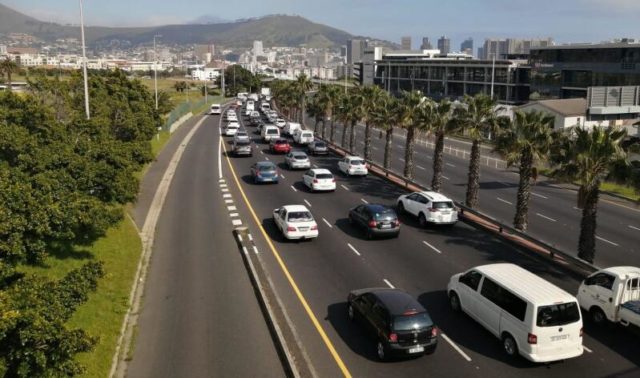Analysis of traffic patterns confirmed that people from less affluent areas, who were less likely to have the ability to work remotely, continued to travel more than the other wealth segments throughout lockdown levels
TRAFFIC levels fell by more than 60% in Gauteng and the Western Cape when the hard lockdown was enforced in April last year, a recent study on Lockdown Traffic Patterns showed.
Provider of spatial data and analysis, Lightstone, together with leading vehicle telematics provider, Tracker, analysed aggregated and anonymised data from a significant portion of Tracker’s more than 1.2 million subscriptions across the country to assess the effect lockdown had on traffic.
“The dataset provided an extensive view of vehicle stops within designated suburbs in three provinces from February to November,” said Linda Reid of Lightstone.
Traffic levels in Kwazulu-Natal fell by around 53% in April – less than Gauteng and the Western Cape during the same time – and also recovered more quickly in May, climbing to 83% of the February, pre-lockdown, benchmark compared with Gauteng (74%) and Western Cape (63%).
By October, all three provinces were ahead of the February benchmark.
Analysis of the traffic patterns confirmed that people from less affluent areas, who were less likely to have the ability to work remotely, continued to travel more than the other wealth segments throughout lockdown levels.
Travel for households earn between R2,500 to R10,000 and R10,001 to R40,000 reduced by around 60% in April, compared with nearly 75% recorded in wealthy suburbs, and then recovered more quickly to surpass the benchmark by October.
Traffic heat maps demonstrate a fall in traffic levels in April, the rapid recovery in May and then the almost back-to-normal patterns in November.
In the Western Cape, traffic levels reduced to just more than 30% of the February benchmark. In the Southern Suburbs traffic levels fell to below 20%, while patterns remained higher in the Cape Flats, and in some areas not dropping at all.
By May, the Cape Flats was close to normal while the November heat map showed close to normal activity across the Western Cape, except for the CBD and nature reserve at Cape Point.
Gauteng has almost fully recovered, with only pockets where traffic levels are below the February benchmark.
In KZN, the effect of the air travel ban is most evident in the area around King Shaka Airport, still trailing traffic levels elsewhere which have returned to pre-February levels.
“With new restriction levels being affected in holiday destinations … some South Africans may now remain home for the holidays, which will more than likely change historical traffic patterns for this period,” the study noted.








